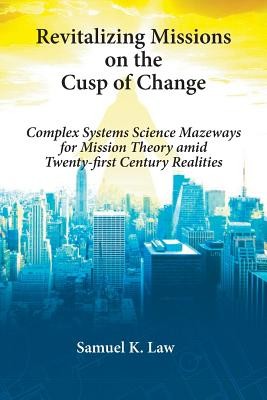
- We will send in 10–14 business days.
- Author: Samuel K Law
- Publisher: Emeth Press
- Year: 2016
- Pages: 258
- ISBN-10: 1609470974
- ISBN-13: 9781609470975
- Format: 15.2 x 22.9 x 1.5 cm, minkšti viršeliai
- Language: English
- SAVE -10% with code: EXTRA
Reviews
Description
This book argues that the field of missiology must adapt Complex Systems Science metaphors, models, and methods in order to remain relevant and valid in the study of twenty-first century realities. To highlight the benefits of the adaptation to a Complex Systems Science-framed approach, a case study of multicultural, multilingual, and multicongregational churches of the Chinese diaspora in North America is used to compare the normative, traditional model of Christian revitalization developed by A.F.C. Wallace with a proposed Complex Systems Science-framed Cusp of Change model. The comparative study reveals the more robust, integrative, and comprehensive nature of the Cusp of Change model to represent the realities of Christian revitalization in the twenty-first century context of systemic, continuous, and complex change. The comparative study also finds that the Cusp of Change model is more compatible with the biblical and missiological definitions, observations, and praxis of Christian revitalization as revealed by the contemporary consultations of the Center for the Study of World Christian Revitalization Movements held from 2011 - 2013.
EXTRA 10 % discount with code: EXTRA
The promotion ends in 22d.02:31:51
The discount code is valid when purchasing from 10 €. Discounts do not stack.
- Author: Samuel K Law
- Publisher: Emeth Press
- Year: 2016
- Pages: 258
- ISBN-10: 1609470974
- ISBN-13: 9781609470975
- Format: 15.2 x 22.9 x 1.5 cm, minkšti viršeliai
- Language: English English
This book argues that the field of missiology must adapt Complex Systems Science metaphors, models, and methods in order to remain relevant and valid in the study of twenty-first century realities. To highlight the benefits of the adaptation to a Complex Systems Science-framed approach, a case study of multicultural, multilingual, and multicongregational churches of the Chinese diaspora in North America is used to compare the normative, traditional model of Christian revitalization developed by A.F.C. Wallace with a proposed Complex Systems Science-framed Cusp of Change model. The comparative study reveals the more robust, integrative, and comprehensive nature of the Cusp of Change model to represent the realities of Christian revitalization in the twenty-first century context of systemic, continuous, and complex change. The comparative study also finds that the Cusp of Change model is more compatible with the biblical and missiological definitions, observations, and praxis of Christian revitalization as revealed by the contemporary consultations of the Center for the Study of World Christian Revitalization Movements held from 2011 - 2013.


Reviews